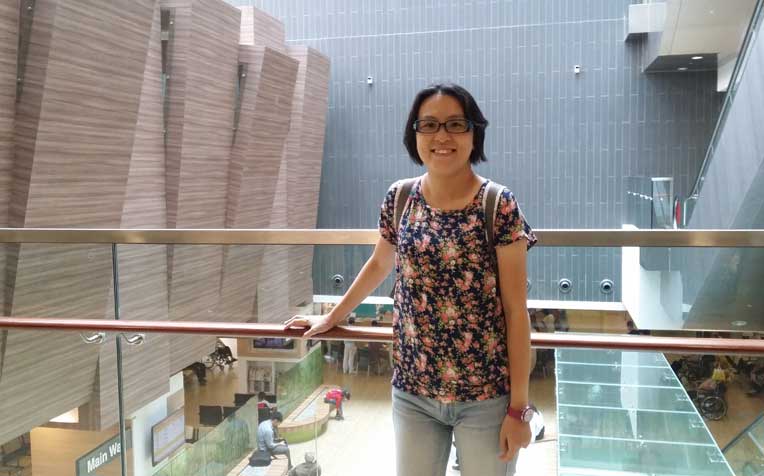
Heart pump allows her to travel and spend more time with her family and friends.
The next time you complain about the battery life of your smartphone, think about Serene Lee. Every six hours, this 35-year-old mother has to replace one of the two external batteries powering her mechanical heart pump.
If one of the batteries fails, she may die.
In 2011, Serene was diagnosed with heart failure. Her condition deteriorated and by 2012, she was constantly breathless. The simplest activities, such as washing her hair, walking and even eating, required determination. In December 2012, surgeons implanted a mechanical heart pump called left ventricular assist device, or LVAD, in her chest to save her life.
The pump is connected to two external batteries and a monitor screen through a cable that comes out of an open wound on her abdomen. This is until she can get a heart transplant.
“Without this heart pump, I would have died. It’s amazing how fast I regained a quality of life after it,” she says.
However, right after the pump implant, the bubbly and upbeat mother-of-three wasn’t sure if she’d be able to cope. “I had to adjust to the idea of living with a cable coming out of me. There are also physical hassles, such as the daily wound cleaning and the need to carry nearly 2 kg of external parts, including a spare battery, everywhere I go.”
In addition, the blood-thinner she must take affects her diet. For instance, she has to be very careful about the amount of broccoli, cauliflower and green leafy vegetables she eats. “Soy bean is the worst. For me, eating a whole container of bean curd would almost be like committing suicide. My blood could thicken too much and clog my pump.”
As is often the case with life-altering events, there was a silver lining. Serene decided to quit her job and now has more time to spend with her children. “I also started having regular lunches with my mother, something which I have never had the time to do before.”
There were small perks as well: “When I take a plane, I definitely get to keep my bag, which holds the batteries to my heart pump, on my lap during take-off and landing. And I skip the metal detector part,” she adds with a giggle.
In January 2014, Serene participated in the creation of the first support group in Singapore for people who have been fitted with the LVAD. Through the group, she shares advice with and befriends a number of patients with heart conditions. In 2015, the members of the LVAD Support Group elected her as their chairwoman.
“I feel blessed to be able to help. It keeps me going,” she says.
| Fact Sheet on Serene Lee | |
|---|---|
| Personal data : | Age 35, married, 3 children |
| Occupation : | Homemaker |
| Hobbies : | Regularly meeting with friends |
| Cool fact : | She has no pulse. Her blood circulates thanks to the continuous flow of her pump, while her heart is resting. |
What are your best 3 tips for people who wish to emulate you as heart hero?
- Remember that a thankful heart is a happy heart.
My lifestyle has changed but I’m grateful that I’m still alive. Back in the day, people with my heart condition would often not make it. I’m glad just to wake up and be able to see the sun. I’m happy with who I am and what I have.
- Stay fit.
After receiving a heart pump, a lot of heart failure patients have a superb appetite - so much so that many gain a significant amount of weight in the first year. Watch out for that, because you want to be in good shape and fit for surgery the day they call you in for your heart transplant.
- Live to the fullest.
Since I’ve received my heart pump, I’ve travelled to South Korea, Thailand, Malaysia, Hong Kong and Australia. I’m far from being the only one with a heart pump who dares to travel. Almost everything is possible, except swimming. But if you used to love swimming, now is your chance to try an amazing new sport or hobby.
Ref: Q15
Contributed by














 Get it on Google Play
Get it on Google Play